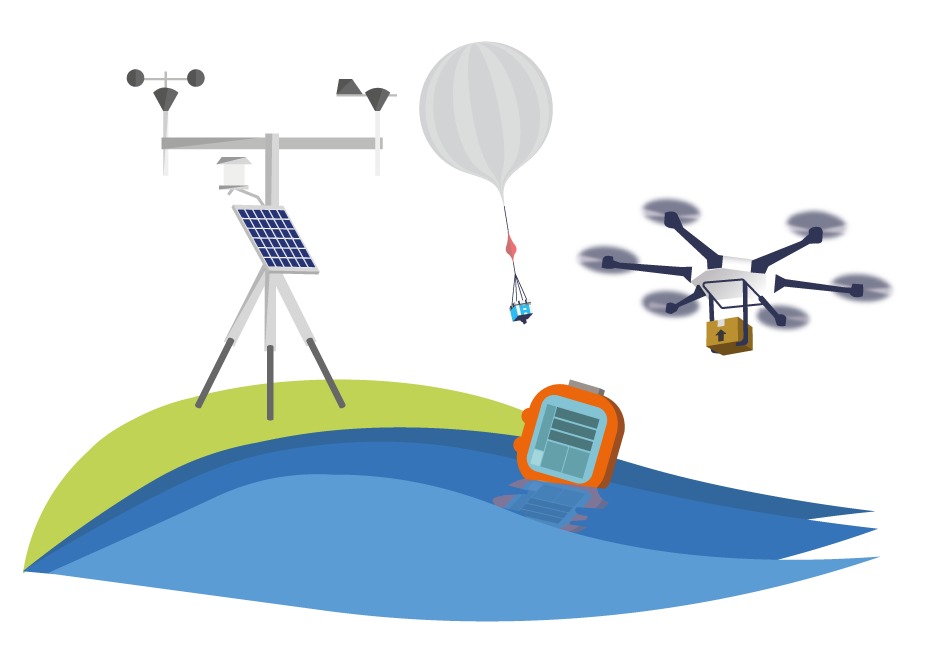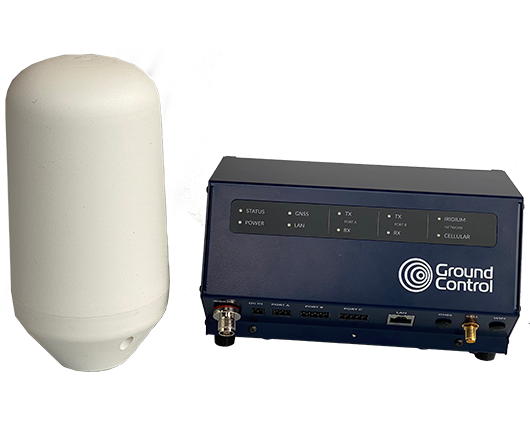Why is a satellite solution needed?
For years, PSTN lines have facilitated many remote data collection applications. On December 31 2025, in the UK, these lines will be switched off, as BT Openreach focuses on developing its fibre network, which delivers IP telephony – the “new” means by which data will be transferred. And this pattern is being repeated across the developed world. However, it will be many years before fiber finds its way to remote locations – if indeed it ever does – and it’s cost-prohibitive for most companies to fund this privately. While cellular connectivity provides a viable alternative, some sites are so remote that there is no cellular coverage.
Satellite connectivity is the clear choice in this scenario, allowing organizations to securely extend IT infrastructure to every remote corner of their operations, create complete visibility of assets and allow process control. Satellite-based technology also offers cyber-secure scalable communications.
Not all satellite services are the same. Indeed, the diversification of satellite services has made this option much more flexible and cost-effective than it was several years ago. By understanding the application, the frequency of transmission, and volume of data, you can ensure the best communications solution fit.
We’re exploring the two most popular options for satellite connectivity in the context of the PSTN switch off, to help you choose the best solution for your needs.
BGAN M2M (now IoT Pro)
Viasat, who own and operate a network of geostationary satellites and ground stations, provide IoT Pro – previously known as the Broadband Global Area Network (BGAN) service. With full IP connectivity, and as it’s a lower bandwidth M2M service, it’s a good fit for the types of applications currently served by PSTN lines.
Designed as a low data volume service for monitoring process control type applications such as SCADA, monthly data plans start at 2MB per month, going up to 50MB per month and beyond. By scrutinizing how the application is generating data, and the structure and format of the files, it is possible to reduce data volumes. Inmarsat use data compression to reduce data volumes to one-third of the cellular volume used for the same application.
Top four benefits of IoT Pro (BGAN M2M) as a PSTN replacement solution:
- Terminals are less than 30cm by 30cm – much smaller in size than traditional satellite dishes and consume far less power.
- Terminals are designed to be externally mounted giving zero-footprint inside a communications cabinet.
- Low power requirements enhance the appeal of BGAN for sites with power constraints.
- Some devices have the option of a bolt-on cellular module, which allows them to use LTE in addition to satellite.
Terminals designed to use the IoT Pro service are produced by several manufacturers and Ground Control supplies various options; the Cobham Explorer 540 is a particularly popular M2M device.
Iridium Certus 100
Iridium Certus 100 is a relatively new mid-band service that sits between Iridium’s Short Burst Data service, and its high throughput Certus 700 service. It is designed for applications that require small weight, size and power requirements. Ground Control is one of a very small number of manufacturers worldwide licensed to use the Certus 100 network, and the result is our RockREMOTE series of terminal. RockREMOTE also has a full Linux OS, and storage allowing edge computing-based processing, future-proofing the device and enabling more cost-effective data packet transmissions.
Top five benefits of RockREMOTE as a PSTN replacement solution:
- Iridium Certus-connected enabling data anywhere with an easy to deploy omni antenna
- Integrated LTE capability offering a turnkey solution for critical infrastructure
- Serial to IP forwarding allowing for simple integration with control systems
- Comprehensive power management (9v-32v) including toggling via a Power IO input
- Robust, designed for industrial use with standard DIN rail mounting.
Making the right choice for you
In many respects, the RockREMOTE and Cobham Explorer 540 perform similarly. Both offer dual satellite / LTE connectivity, to help you balance costs with service availability. Both have very low power requirements so they can run on battery and solar power. Both are small and easy to install, and have expected lifespans of 10-15 years. The latency for the Explorer is approx. 2 seconds, and the RockREMOTE is 1 second – both are perfectly adequate for industrial IoT applications (the difference between the distance between the satellite and the earth – here’s more about how satellite orbit heights affect communication).
The Explorer – using the Inmarsat satellite network – connects to a single geostationary satellite, and, once established, the connection is very stable. However, the Explorer must be able to ‘see’ the satellite, which can make it unsuitable for hilly or wooded areas. The RockREMOTE connects to the Iridium constellation of 66 satellites, which are constantly passing overhead; this means that the antenna can point in any direction and still be picked up by a satellite. That’s a key advantage if your remote site is in a valley or surrounded by trees.
The Explorer is a single unit with both antenna and transceiver in the same casing, which is great for ease of deployment; it does present a slight security risk in the respect that if it were stolen or vandalized, the entire unit is compromised. The RockREMOTE is a two piece design with the transceiver designed to be situated in your facility. The antenna is small and discreet, making this design less vulnerable.
RockREMOTE benefits from frequent firmware updates, and the Linux kernel processor and SD storage create endless opportunities for edge processing of data including MQTT, and local applications for 2025 and beyond.
If you need any further help, that’s what we’re here for. Please contact us and we’ll be happy to provide impartial advice on the best satellite PSTN replacement for you.




